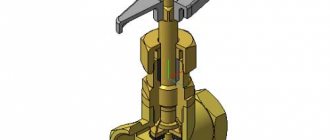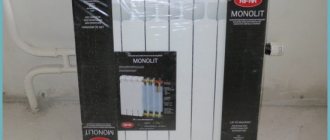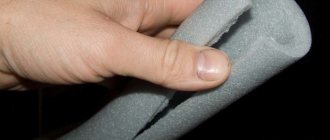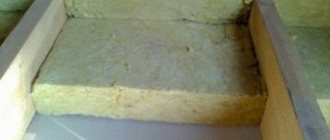What is a faucet valve?
Gate valves and shut-off valves are the most popular types of shut-off valves used to quickly shut off the flow of a working medium in process pipelines, utilities and main lines.
Interesting materials:
Why doesn't Winline withdraw money? Why does the psychrometer wet bulb thermometer show a lower temperature? Why do crows attack people? Why did behaviorism arise? Why does the government budget deficit occur? Why does vitamin D deficiency occur? Why does migraine occur? Why does the problem of double counting occur? Why does photophobia occur? Why did the oprichnina arise?
How does a valve differ from a ball valve by type of installation?
Both types of fittings have a threaded and flanged type of connection to the pipeline. However, each has differences in the range of nominal diameters. For a coupling connection it looks like this:
- valves - DN from 15 to 300 mm;
- taps - DN from 8 to 100 mm.
At the same time, ball valves also have other types of installation:
- Wafer - DN from 15 to 200 mm;
- for welding - DN from 10 to 600 mm;
- combined - DN 15 to 200 mm.
What are locking devices made of?
Before you find out what valves are made of, you need to divide them into two types:
- installed in internal water supply networks;
- mounted on external water and gas pipelines.
If the product is intended for internal water supply networks, then devices made of brass, bronze, stainless steel and plastic are used. If the products are used for outdoor work, then the above materials are used, as well as additionally steel and cast iron.
- Plumbing fixtures made of brass and bronze are expensive options. However, their cost is justified by their quality and durability. Such devices are light in weight, small in size, and can also be installed not only on a water supply system to supply cold water, but also hot water. Such products are also used in heating systems, since scale does not settle on their surfaces.
- Stainless steel valves. Another good option that has a long service life. They are several times cheaper than brass and bronze devices.
- Plastic products are among the cheapest, but they are in no way inferior in quality to the above models. Their disadvantage is that they can only be installed in plastic pipelines.
Stainless steel devices are not recommended for installation in hot water and heating systems. After all, exposure to hot water causes the formation of scale, which subsequently reduces the diameter of the throughput channel.
Cast iron and steel valves are popular for installation on external pipelines. For the manufacture of such products, cast iron and steel are used, which will significantly reduce the price of the device. After all, similar products made of brass and bronze will cost tens of times more.
Installation
Small diameter valves are installed on threads (up to 60 mm). There is a bend on the pipe, the connection is sealed with hemp or fluoroplastic film. Winding is done in the direction of twisting the thread. This creates a tight connection that can withstand high pressure.
A large diameter pipe is connected by a flange to the washer of a direct-flow or angle valve through a sealing gasket. They are tightened together using bolts and nuts. The flange is connected to the pipe by arc welding.
Angle valves
To change the direction of fluid transmission perpendicularly with the possibility of shutting off and adjusting, a water angle valve is used (drawing below: a - through passage; b - angular).
The perpendicular arrangement of the inlet and outlet pipes determines the purpose of the valve for pipelines that change direction by 90 degrees. The principle of its operation is the same as that of the pass-through. The valve moves coaxially with the inlet pipe.
Areas of application for angle valves:
- When supplying pipes to a heating radiator, when it is closed or the coolant flow is regulated by a water valve (see photo below). Models made of high-temperature polypropylene are more convenient and cheaper than brass ones when connected to plastic pipes.
- Prevention of vibration and rocking of pipelines.
- Reduces fluid flow rate without high frequency noise.
- When used in any position.
- Simplification of pipe installation by reducing the consumption of fittings.
Design and principle of operation of a ball valve
The main working part of the valve is a ball with a through hole. When the handle is positioned along the pipe, the valve is open. If you turn it perpendicular to the pipe, it will close. The hole in the ball can be round, square, trapezoidal or oval. In small-diameter valves, the valve is made floating, and for large-sized devices it is made on special supports. High tightness of the valve is ensured by an elastic seal. This allows this type of model to be installed on gas pipelines.
The water ball valve operates in two extreme positions when rotated by 90°, when it is completely open or closed. Trying to control the flow rate will cause rapid wear of the seal.
They have wider possibilities for connecting pipes when installing water supply systems:
- checkpoints;
- corner;
- with three or more outlets for the purpose of redirecting transported flows.
Connections to pipes are made with fittings, flanges and welds. The latter option allows you to permanently install a water valve into the system.
Why do you need a valve, the main advantages and nuances
A type of fitting where the adjustment part moves in a perpendicular position, moving in the direction of flow. Among representatives of this category, the valve is considered more relevant.
Fig 5. Gate valve
The tool is popular in use:
- Transport activities, where the diameter of products ranges from 15-2000mm;
- In creating water and gas supply;
- In the housing and communal services sector;
- Oil production.
The prevalence of the use of valves is due to the following aspects:
- Easy to operate;
- Small sizes;
- Allows operation in various conditions;
- There is a slight resistance in the hydraulics.
The last aspect is important when constructing highways. Constantly carried out in an environment characterized by high speed.
The mechanism is not without serious nuances. When choosing the necessary tools and materials, experts do not recommend using designs where the spindle is retractable. The shutter stroke is at least one diameter.
It is customary to distinguish two types of valves:
- Full bore.
Fig 6. Full bore
*
- Narrowed.
Fig 7. Narrowed
The first one is the most common. In it, the full bore diameter is equated to the value of the pipeline on which the tool is installed. To reduce the amount of torque, valves are used to control the control of valves, including reducing the wear rate of other pipeline components.
There are several principles for controlling valves:
- Manually;
- By means of an electric drive system;
- By means of a pneumatic drive system;
- Through a hydraulic drive system.
Considering the comparative characteristics between a tap and a valve, we can conclude that both elements have a number of similar features and differences.
Valve or shut-off valve
The valve can be called the brother of the gate valve. The device is activated by turning the flywheel, which transmits an impulse to the spindle, which begins to move forward and at the other end the spool, equipped with a gasket, closes. If the valve closes, then reaching the lower position, it rests against the seat, as a result of which the liquid is blocked (locked). This is where the name comes from - shut-off valve. Shut-off valves are widely used in water and fuel systems. They are shut-off and regulating and are presented in a wide variety of appearance and design. The service life varies from 20 to 30 years due to the quality of materials and operating characteristics. Wear occurs when 8 thousand closed-open cycles have been completed.
The devices also have their advantages and disadvantages. The advantages are determined by its operational characteristics:
- smooth regulation of water flow
- maintainability (replacement of the spool gasket or stuffing box gasket with its tightening);
- the presence of a smaller number of rubbing parts, which provides the valve with an increase in service life;
- the use of valves when regulating the flow of water to several objects (you simply cannot do without them) water and heat supply.
Disadvantages are characterized by a decrease in performance properties due to:
- increased hydraulic resistance, creating a stagnation zone where suspended particles can accumulate, which can cause premature wear and corrosion;
- failure of the spool gasket (separation by liquid flow, sticking, drying out), which leads to frequent repairs;
- the need to maintain the valve device in working condition, for which it should be completely opened or closed at least once a year if there has been no load in operation for a long time.
The exception to the rule here is a direct-flow valve with an inclined spindle, where less resistance is created in the hydraulics. This is achieved by the oriented position of the seat towards the fluid flow.
What are the main differences
It is customary to distinguish three types of fittings depending on their purpose:
- Driven.
- Regulating.
- Constipated.
Some classifications add a safety group.
Considering the main differences between a valve and a ball valve, it is worth noting that in the first mount it is possible to adjust the fluid flow. A ball valve is not capable of performing this task. Based on current regulations, controlling and changing the flow of liquid using a ball valve is strictly prohibited by safety regulations. This is primarily due to the limited functions, since the regulator can only open or close the flow.
With the help of a valve, changes in the operating pressure are allowed due to the water pressure in the pipelines.
This is all due to design differences that determine the functions and use of elements. Considering the main elements of the fixed valve body, the shutter mechanism in it “sits” on the seat. Its movement is carried out in the direction of the flow.
When operating a crane, turns are carried out around its own axis. If additional elements are needed, plumbers use ball elements. When the ball begins to rotate, the diameter in the hole automatically changes.
The valve is equipped with a ground box. When the stems are screwed in/out, the valve moves up and down.
Comparing both designs, several conclusions can be drawn:
- The valve is in the closed and open positions.
- The valve is also capable of regulating the pressure.
- To visually recognize whether it is a valve or a faucet, just pay attention to the handle. The faucet's structure is quite simple, unlike the valve (here it is presented in the form of a lamb).
When considering the main types of shut-off valves, it is recommended to consider another popular element - the valve.
There are several types of cranes, based on the body of rotation:
- Conical. Visually resembles the shape of a truncated cone. The hole can be seen in a rectangular or round shape. Most often used in gas supply. Popular due to its price.
Fig 2. Cone
*
- Cylindrical. Chief regulator of the heating system. Can perform vertical movement to regulate fluid flow.
Fig 3. Cylindrical
- Ball. No plumber can do without it. The hole is made in a round shape through which the medium passes.
Fig 4. Ball
Plastic or metal faucet
With the arrival of polypropylene pipes on the market, polypropylene taps began to be actively promoted. They are offered as a cheap alternative to brass. Any plastic under constant temperature influence can become unusable in a short time. This is important to consider when purchasing plastic taps.
Often, polypropylene taps are connected to a pipe by welding. After the faucet fails, you will need to cut off the pipe and weld a new faucet into it. With metal taps everything is different. You need to unscrew one and install the other.
When choosing the best faucet, remember that a brass faucet is always more reliable than any plastic.
Comparison
The main difference between a valve and a faucet is that the main element of the first shut-off device is a partition that moves perpendicular to the flow of liquid or gas in the pipeline. The main element of the faucet is a valve with a channel made in it, which, when placed parallel to the flow or at a slight angle to it, increases the intensity of fluid movement in the pipe, and when placed perpendicular to the flow or at a large angle to it, reduces its intensity.
The difference between the considered types of locking elements can also be traced in the following aspect:
- wear;
- requirements for spaces outside the pipeline cross-section;
- scope of application, prevalence of inclusion in the structure of household faucets.
Having determined what the difference is between a valve and a faucet, we will record the conclusions in a small table.
Features and purpose
A valve or gate valve is a locking system. According to the standard, they are called shut-off valves.
You've probably already encountered shut-off valves. For example, any household water supply system is probably equipped with devices that allow you to limit the flow of liquid in one direction or another. Completely closing the tap in a matter of seconds blocks the movement of the carrier, cutting off a specific section of the branch.
As a result, with one movement of your hand, you get the opportunity to isolate a part of the pipeline, and then perform some operations on it.
In domestic conditions, valves are most often used. Valves and gate valves are also shut-off valves, only of a larger type.
Placed on pipes with a diameter of up to 100 mm. The parts described in this article are too large and powerful. They can be mounted on pipes whose diameter only starts from 100 mm (although there are exceptions).
Mostly this means installation on main branches of water supply systems, heating systems, oil pipelines, oil pipelines, etc.
Interestingly, it is designed so that each element can withstand enormous pressure in conditions of constant movement of the carrier. Because of this, the design is more expensive, but much more efficient than conventional valve fittings.
Connection type
We have already noted that a valve, like a gate valve, has a similar structure and is used for similar tasks. To compare them with each other, and also to have a complete picture in your head of how a valve differs from a gate valve, you need to analyze the operating principle of each sample. Understand how it works and what it consists of.
But before that, let’s pay attention to the methods of connecting them to the pipeline. They have them in common.
Elements of this type can be:
- welded;
- coupling
This refers to the type of connection to the pipeline. There are practically no differences here. Both valves and gate valves are made in all variations.
The flange type of connection implies. A kind of connecting rings welded onto the edges of both shut-off valves and pipelines. This is a good option when you need reliability combined with practicality.
The flanges are welded onto the outlets, then... The connection occurs by tightening the mating flanges on the pipe and the valve with bolts. The number of bolts, their size, flange diameter and many other parameters depend on the conditions in each specific case.
Flanges are most conveniently used in industry, but they are also useful in domestic conditions, as well as in civil engineering.
I think you already know enough about welded joints. Welded shut-off valves are not as popular as flanged or coupling valves, but they are also quite widely represented on the market, which means it would be a mistake not to mention them.
Mounted on pipelines using gas or electric welding. The advantages of such connections are their strength. Disadvantages: it is not possible to remove the shut-off valves. And such a need can arise at any moment.
Shut-off valves do not last forever. Dynamic processes are constantly taking place in it. The seals wear out, the wedge becomes loose, parts wear off. Sooner or later the valve will fail. And what to do then is an open question.
Mounted primarily on threaded connections. This is an intermediate option between welding and flanges. You need to tinker with it more, but you can do without a welding machine at all. They are used to a greater extent on medium-sized civilian systems.
Valve design and operating principle
Valve - shut-off valve. You should have seen the valves, if not live, then on TV.
This is a large pipeline element, slightly thicker and with a large control ring, which is actually called a valve. The function of the valve is to shut off and regulate the flow of liquid inside the pipe.
This is how it differs from a gate valve. The fact is that the fixed part can be in several positions at once.
If you twist it a few turns, the flow is only partially blocked. The locking element will artificially reduce the diameter of the passage hole inside, which will affect the amount of liquid delivered.
Closing the valve completely shuts down the entire system, just as it does. This ability to choose the position for the shut-off element inside the valve is its main advantage.
Very often in industrial pipelines there is a need not only to completely shut off the flow of liquid, but only to moderate it to certain values. The easiest way to do this is by installing valves in potentially suitable locations. Humanity has not yet come up with a more convenient and simpler method.
Parsing the internals
The valve consists of several main parts. The base for all its internals is contained in a powerful body.
The body is predominantly cast, rather than collapsible. But there are different models, each specific scheme undergoes some changes, in accordance with the expectations and desires of the manufacturer.
There is a hole inside the case for the passage of liquid. This hole can be either full-size or reduced.
The full-size passage makes it possible to transport the liquid in full, and also reduces the load on the inside of the valve. The liquid flows without problems, meeting no resistance.
Another thing is miniature valves. They in their basic state are not capable of passing a nominal amount of media in the same period of time.
In the central part of the body there is a valve blocker or simply a valve with a spindle. A thread with guides is connected to it, and the thread is controlled by rotating the valve handle.
The system is simple and unpretentious, which is why it is so effective. By rotating the handle, we transfer force to the screw thread. It affects the position of the valve inside the valve. Tightening the handle lowers the valve, unscrewing it on the contrary raises it. Accordingly, you can regulate the movement of the carrier in the pipe as you wish.
An important feature is that the flow of liquid in the valve is blocked by parallel blocking of the flow. This affects the cost of the entire structure, as well as its price of its varieties. That is why a full bore valve sample is much more expensive than a standard narrowed one.
Table
| Gate valve | Tap |
| What do they have in common? | |
| Gate valves and taps provide high tightness to block the flow of liquid or gas in a pipeline, suitable for high pressure pipes | |
| What is the difference between them? | |
| The main locking element of the valve is a partition that moves left and right or up and down (unless it has a more complex structure, for example, a double-leaf design) | The main shut-off element of a faucet is a valve that can rotate around its axis and place the channel made in it at a greater or lesser angle relative to the flow of liquid or gas in the pipe |
| Wears more intensely with frequent use | Less wear and tear with frequent use |
| As a rule, it requires significant space outside the pipeline cross-section to accommodate the extending part of the partition | Requires spaces outside the pipeline only for the purpose of placing control elements - valves and their complementary mechanisms |
| It is mainly used as a typical locking element that is in the “open”, “closed” or other static position for a long time | It is used as an adjusting element, through which you can set the desired flow rate in the pipeline at any convenient time |
| Generally not used as a component of household faucets | Is one of the main components in household faucets |
Water valve: repair
If the valve shut-off element is damaged, it is replaced with a similar, unworn or new unit. To do this, a section of the pipeline is freed from liquid, blocking it on both sides. Then the valve-type shut-off element is dismantled. The ball valve is removed completely using open-end valves or on the flanges the nuts are twisted parallel and gradually - 3-4 turns on each.
First, you should check the serviceability of the seals, which are replaced when worn. Leaks mostly occur due to deformation of gaskets and thread breakage due to improper installation. Then the body and seat are inspected. If there are no cracks, the assembly is reassembled. The housing cannot be repaired if mechanical damage appears on it. The growth to the pipeline requires cutting it and the need for further welding work.
In this case, you will have to install a new or repaired water valve. An unprepared person should not undertake complex repairs due to ignorance of its features.
Shut-off valves create additional resistance, so blockages may form at the connections. It is not always necessary to remove valves. Sometimes it is enough to simply flush the pipelines by opening all the taps.
Replacing the oil seal can be done carefully with your own hands. To do this, you need to shut off the water supply from the riser, disassemble the locking mechanism, replace the gaskets and lubricate the moving parts.
Device design
The valve design is quite simple, and the product consists of the following main parts:
- Frame.
- Locking device.
- Handwheel or locking handle.
The body of the product is made by casting. A locking device is installed inside the housing, and the flywheel is brought out. The body also has threads on both sides, through which the valve is connected to a water or gas pipeline. The cross-sectional diagram of shut-off valves is as follows:
Connecting devices to pipes
Valves are divided into two types according to the installation method:
- Coupled and threaded. The main connecting element with this connection method is the thread. It can be internal and external on the valve (popularly called “mother-father”). Fittings of this type are installed in pipelines with a pressure of no more than 1.6 MPa.
- Flanged. At the end parts of the pipes there are flanges, with the help of which cast iron or steel products are connected. Installation of such devices is carried out on main and industrial pipelines in which the water pressure exceeds 10 MPa.
Plastic valves are connected to pipelines through special welding. Knowing the features of the devices in question, you can choose the best option for the appropriate installation. Recently, ball valves have become very popular because they have a long service life, despite the inability to repair them.
general information
A valve is a drive fitting used for the manufacture of a pipeline, where the gate valve rotates around its own axis in a perpendicular direction. The element includes two components:
- Movable type cork;
- Static body.
Fig. 1. How the structure is constructed
The valve is a drive-type fitting, where the structure moves along the flow and fits onto the seat. Designed for direct opening or closing, regulating the flow of any medium.
Valve valve design and operation
The most important working part of the valve is the seat with a shutter moved manually by a spindle. The water valve, the design of which is shown below, contains threads in the body and on the stem, which have the property of braking. As a result, the valve disc is pressed tightly against the seat, shutting off flow when the valve is closed. In the open state, the flow area remains unchanged when the water flow moves.
Typically, the body is not threaded because it wears out quickly. To do this, a running nut is attached to it, into which the spindle is screwed. Then, instead of the worn-out unit, you can install another one, and the housing will be preserved. All parts are interchangeable with a water valve (GOST 12.2.063-81, GOST 5761-74).
The valve is opened by turning the handle. At the same time, the spindle moves progressively, freeing up the passage for liquid. If the rotation is performed in the opposite direction, the valve will close.
The device is connected to the pipeline through the inlet and outlet pipes. They can be distinguished from each other by the presence of an arrow indicating the direction of flow.











